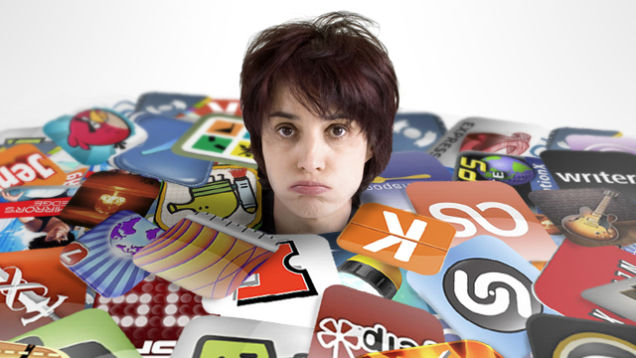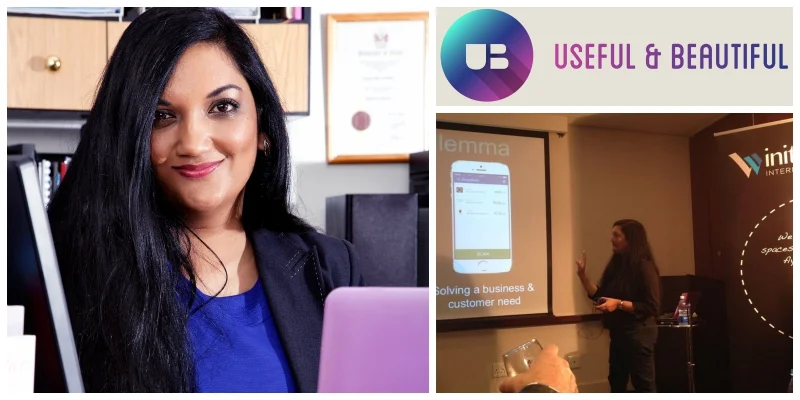by Lynette Hundermark, managing director of Useful & Beautiful
8 years after the global app-splosion, even in a country like South Africa where smartphone adoption took a little longer than the rest of the world to catch up, “app-overload” aka “app-fatigue” is now a thing that we are all faced with in this digital and mobile age.
There is pretty much an app for everything. According to statistic.com, in 2017 there were at least 2.8 million apps available on Google Play, 2.2 million on the Apple App store, 669K on the Windows store, 600K on the Amazon app store and even 234K apps on BlackBerry World (surprisingly as this is considered a dying platform by most). With so many apps out there to choose from, it’s no surprise that we are suffering from “app fatigue”, not least of all those in the mobile and digital community whose lives revolve around high levels of activity on their smart phones.
Take a trip back with me for a moment, to the time when computers first became available. Do you remember standing in front of the shelves of shiny, new software packages, trying to decide what to buy? In the 80’s and 90’s, computers and software represented an exciting new adventure, in much the same way that (either as a business endeavour or as a consumer) exploring the plethora of apps available on the market does now.
As an app creator, not only do you have to ensure that your app has that value to make your users want to use your offering instead of competitors’ (an ongoing task that is part of your overall mobile app strategy), but also you need to look at using mechanisms effectively to keep your target audience engaged without inundating them with push notifications. This is something seen as the holy grail by most marketers, except that they usually use it as spam, rather than for personalised marketing.
For the consumer, the selection of apps to choose from is simply overwhelming and like software, people will return to what they are familiar with and what works. I’ve worked on a number of mobile projects over the years and part of my user experience research always involves understanding my target audience and what apps they love using and it doesn’t matter what the digital literacy of the user is, they will always compare any messaging app or feature to “WhatsApp”, or the other popular social media apps available.
Building apps for the sake of ‘having an app’ has long since lost its novel appeal and these days offering true value and engagement are the bare minimum requirements to launch a successful app in the marketplace. These are a few pointers you need to consider (at a bare minimum) to ensure your app doesn’t have users falling into the “App-Fatigue” trap, as are now aware that this affects both developers and consumers.
From a consumer point of view:
- Look at all the apps on your phone and classify them into categories: Entertainment, Banking, Social Media, etc.
- Once you group your apps into these categories, keep the ones that add that value to your life, in some you may feel compelled to use a particular app without much option, for example with banking apps, you are compelled to use the app designed and built by your financial institution.
- Delete duplicate apps or apps that don’t work too well and have a better equivalent. Personally, I’ve found the Vodacom USSD a much better platform than the app so I’ve deleted their app as it never really works when I need it.
- Look at the mobile web equivalents. If you don’t need to use an app frequently, i.e. only access it a few times a year, then look at their mobile web equivalent and see if that would serve the same purpose by comparing features.
- Remove unnecessary apps such as apps that are downloaded as a once-off for a competition, if you never need to use them again, remove them.
From a developer and brand point of view:
- Offer true value and engagement to your end user.
- If you are looking at developing a competing product, ensure the user experience and data costs are lower than your competitors. Comparatively speaking, Snapchat has never taken off in South Africa due to its high data consumption (it uses far more data than WhatsApp or Instagram for example).
- Don’t spam your users with push messages, have a push message strategy and execute meaningful messaging.
Lynette Hundermark co-founded U&B from Prezence Digital, where she served as the Apps Business Director and Head of Product Strategy. Her prior roles included mobile roles within the Naspers Group and she started her tech career as an enterprise analyst/programmer working in the UK for brands that included HSBC, Citibank , and Tesco. With a BSc (Hons) in Computer Science & Psychology , Lynette also holds various technology certifications in development, SCRUM and human factors in computing. Lynette's appetite for the mobile space while keeping abreast of the latest industry trends has established her locally as an expert tech commentator and opinion leader. She is also involved in a variety of mentorship programmes that aims to build a greater community of passionate people in the tech and mobile field.
WEBSITE | FACEBOOK | TWITTER | INSTAGRAM | EMAIL lynette@usefulandbeautiful.co.za
Read more articles by Lynette....









